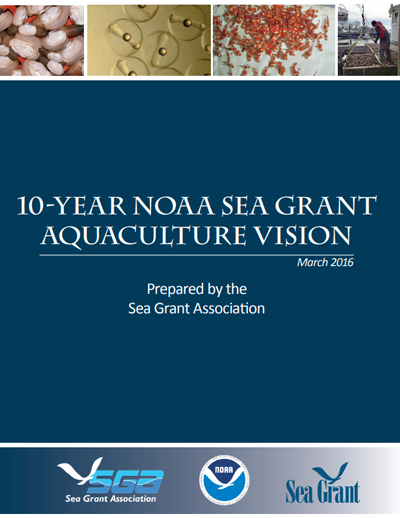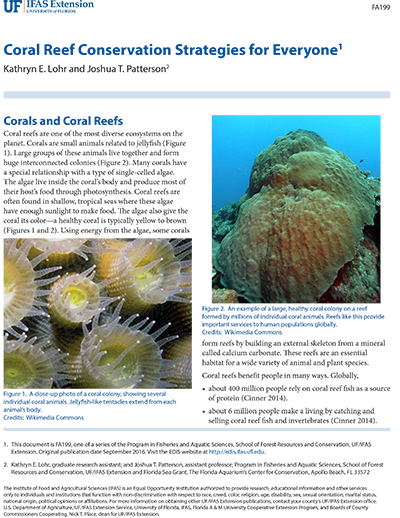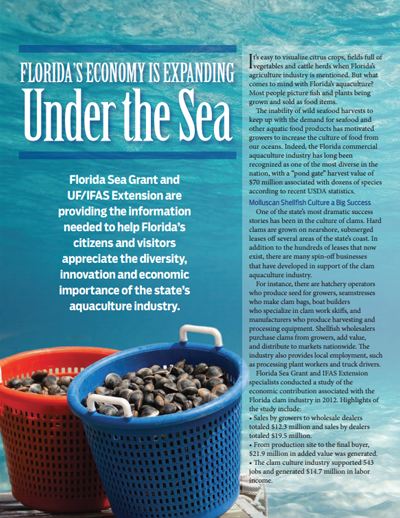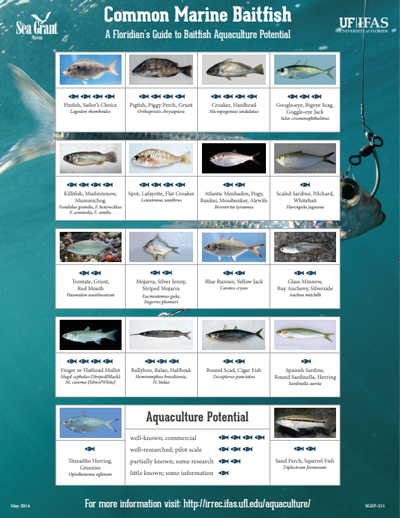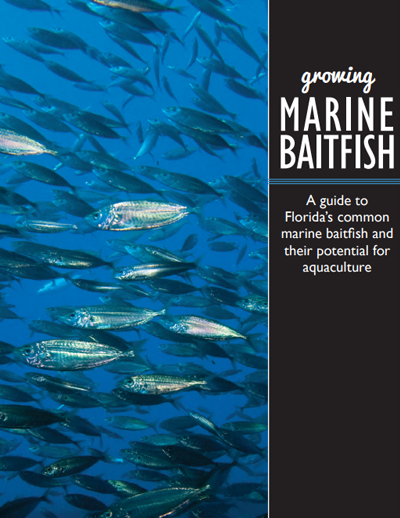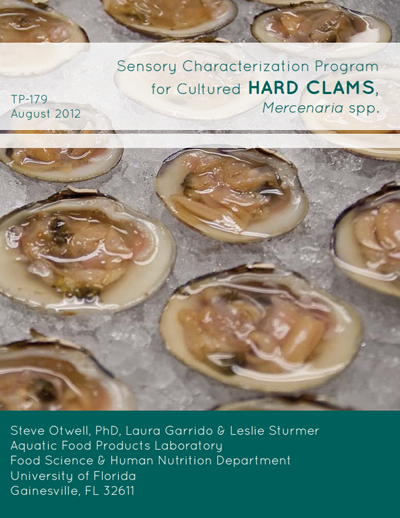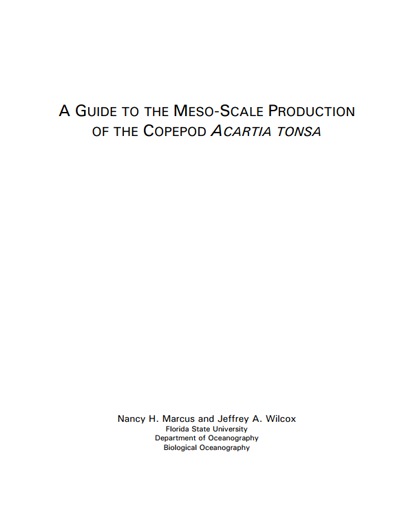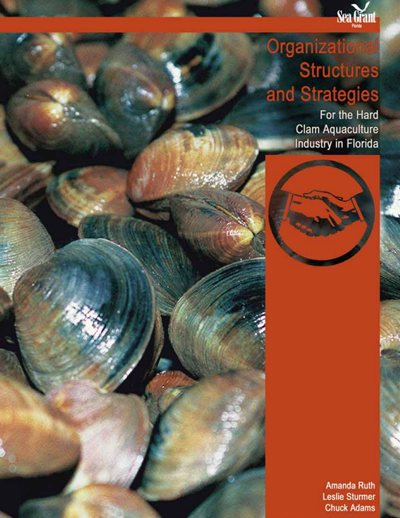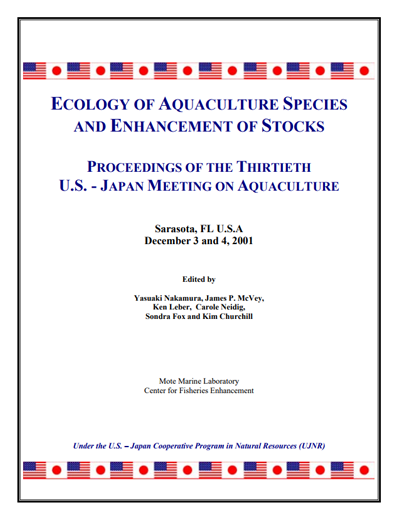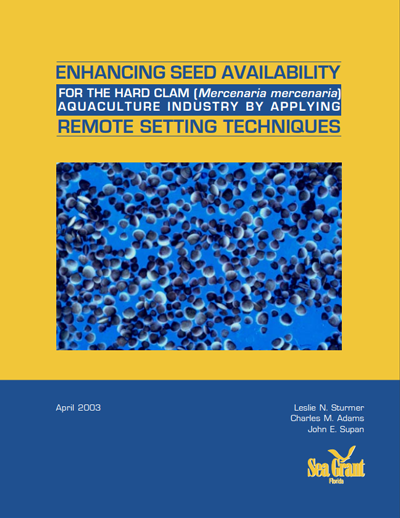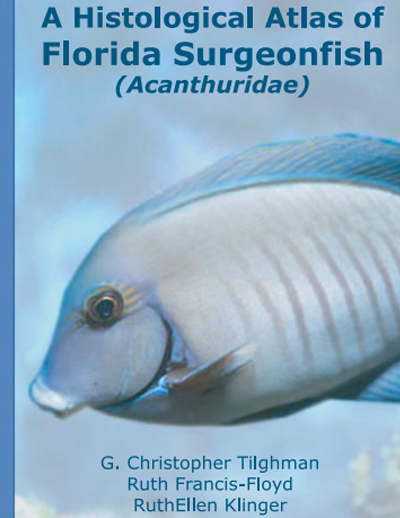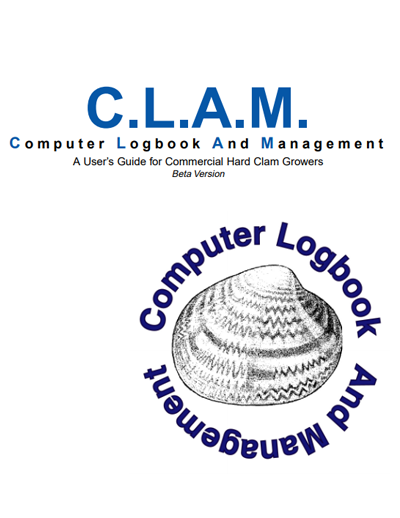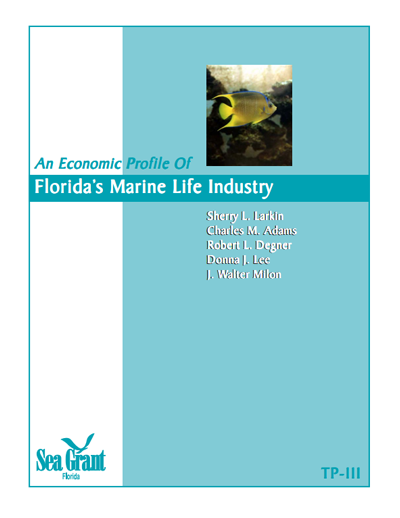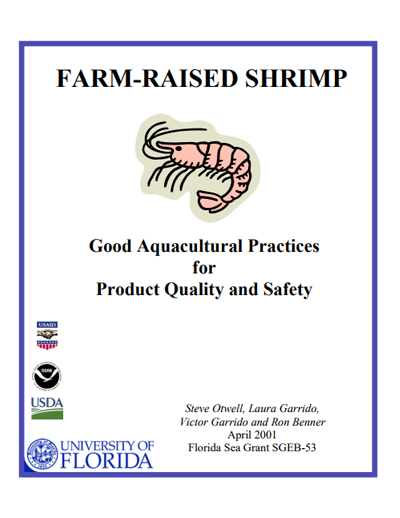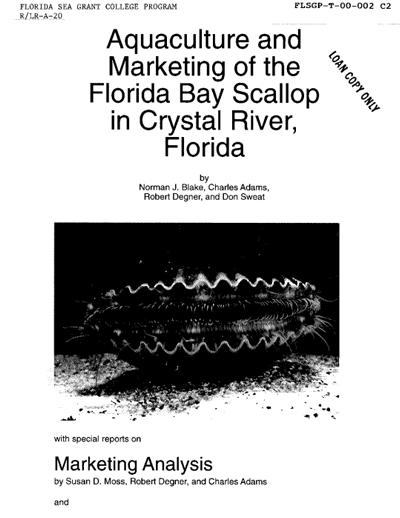To order publications, email the publication number and title to info@flseagrant.org. Be sure to include your mailing address and phone number.
10-Year NOAA Sea Grant Aquaculture Vision
March 2016
Sea Grant will likely be investing $50 million to $100 million in aquaculture research and technology transfer over the next 10 years. A clear vision will help guide strategic investments to support and expand the aquaculture industry. This document explains Sea Grant’s appropriate roles over the next 10 years, and priority research strategies leading to sustainable economic development, environmental conservation and social well-being.
Big Bend Shellfish Trail
2017
Coastal towns along Florida’s Big Bend have long depended on seafood for their economic survival. The new Big Bend Shellfish Trail brochure and map outlines the best places to buy, eat and locate local shellfish.
Through Seafood HACCP Alliance, Sea Grant Helps Industry Meet Expectations for Food Safety
October 2016
For more than 20 years, the National Sea Grant network has been the driving force behind one of the nation’s leading food safety education efforts — the National Seafood HACCP Alliance for Training and Education. The Alliance is Sea Grant’s most successful extension program, leading to national reductions in foodborne illnesses and helping sustain the $238 billion economic impact generated by the nation’s seafood industry.
Coral Reef Conservation Strategies for Everyone
September 2016
Patterson, Josh
Conservation and restoration of coral reef habitats are key to their future and the future of nations that depend on them, including the United States. An important part of any conservation effort must be to reduce or eliminate the stressors that are causing reefs to become degraded. This article will outline some of the major threats to coral reefs and the strategies that everyone, whether living one mile or one thousand miles from a coral reef, can use to help reduce negative impacts on these ecosystems and preserve their services for years to come.
Florida Trend Report: Florida’s Economy is Expanding Under the Sea
This report is part of a two-year campaign, Florida’s Changing Seas, published in Florida Trend. This report discusses the state’s aquaculture industry and what Florida Sea Grant is doing to expand it.
Common Marine Baitfish: A Floridian’s Guide to Baitfish Aquaculture Potential
SGEF-211
May 2014
Ohs, Cortney
How much is known about marine baitfish and their ability to be farmed in a sustainable manner? This poster uses an easy-to-understand rating system to demonstrate which baitfish have more potential for aquaculture based on the latest research.
Growing Marine Baitfish: A Guide to Florida’s Common Marine Baitfish and their Potential for Aquaculture
SGEB-69
February 2013
Ohs, Cortney; R.L. Creswell and M. DiMaggio
Florida is the saltwater fishing capital of the U.S. Can commercial growers fill market demand for marine baitfish? In this full-color guide, authors Cortney Ohs, LeRoy Creswell and Matt DiMaggio look at aquaculture prospects for 18 common but sought-after Florida species.
Sensory Characterization Program for Cultured Hard Clams, Mercenaria spp.
TP-179
August 2012
Otwell, S.; L. Garrido and L. Sturmer
A sensory characterization program has been developed for cultured hard clams Mercenaria mercenaria, southern quahogs M. campechiensis, and their hybrids using established protocol with screened and trained panelists. This sensory program can be used by investigators assessing product quality and shelf life, or commercial interests trying to distinguish products by location, season, or process. Popular use could lead to local product distinctions or appellations that stimulate and attract consumer interests.
The Potential of Blood Ark and Ponderous Ark Aquaculture in Florida: Results of spawning, larval rearing, nursery and growout trials
TP-169
September 2009
Sturmer, L.N.; J. M. Nunez; R. L. Creswell; and S.M. Baker
This document presents research on two alternative species, the blood ark (Anadara ovalis) and the ponderous ark (Noetia ponderosa). The information presented is not a hatchery or growout manual, but is provided as a reference for shellfish hatchery operators and growers, resource managers, and others who may be considering the culture of blood or ponderous arks as alternative or additional species.
A Guide to the Meso-Scale Production of the Copepod Arcartia tonsa
TP-156
January 2007
Marcus, N.H. and J.A. Wilcox
This manual is intended as a guide for the daily production of a few million A. tonsa nauplii for feeding to marine vertebrates and invertebrates. Commercial production of copepods requires much greater feed production than is described, or the development of an efficient artificial feed, and, therefore, is not the focus of this manual.
Organizational Structures and Strategies for the Hard Clam Aquaculture Industry in Florida
TP-141
January 2005
Ruth, A.; L. Sturmer and C. Adams
This study provides guidance on statewide organization for the commercial hard clam culture industry in Florida. The study characterizes the structure of and identifies strategies for successful agricultural and aquacultural organizations designed to provide the resources needed to solve current and projected industry problems.
Ecology of Aquaculture Species and Enhancement Stocks: Proceedings of the 30th U.S.-Japan Meeting on Aquaculture, Dec. 3-4, 2001 in Sarasota, Fla.
TP-128
May 2003
Edited by Nakamura, Y.; J. McVey; K. Leber; C. Neidig; S. Fox and K. Churchill
These proceedings of the 30th U.S.-Japan Meeting on Aquaculture that occurred Dec. 3-4, 2001 in Sarasota, Fla., include case studies, physiological and ecological applications, and information on growth, nutrition and genetic diversity.
Enhancing Seed Availability for the Hard Clam (Mercenaria mercenaria) Aquaculture Industry by Applying Remote Setting Techniques
TP-125
April 2003
Sturmer, L.; C. Adams and J. Supan
Hard clam aquaculture has developed rapidly in Florida as well as in other states in the southeast. Remote setting of hard clam seed would allow growers to become less dependent upon traditional seed sources, potentially reduce the cost of seed, and help ensure a greater chance of success by gaining control of and incorporating another step into their existing business. The goal of this study was to test a technology that may help ensure a reliable and consistent supply of high quality and inexpensive clam seed to growers.
A Histological Atlas of Florida Surgeonfish
TP-123
2003
Tilghman, G.C.; R. Francis-Floyd and R. Klinger
Acanthurids are an important group of reef fishes, because of their impact as herbivores on reef ecology and their popularity as display animals. The acanthurids are extremely abundant in tropical and subtropical waters of of the Florida Keys. Three species are found in the waters of the Florida Keys: Acanthurus coeruleus (blue tang), A. bahianus (ocean surgeon) and A. chirurgus (doctorfish). This histological atlas focuses on A. coeruleus and includes major organs and tissues.
CLAM – Computer Logbook and Management: A user’s guide for commercial hard clam growers, beta version
TP-122
September 2002
Sturmer, L.; M. Zylstra and C. Adams
The CLAM software package assists commercial hard clam growers in managing the information concerning their nursery and growout operations. CLAM allows growers to better track their clam inventory, map lease sites and keep track of where clams are located within each lease. CLAM also provide growers a means to keep track of costs and earnings over the course of a production cycle.
Economic Impact of the Florida Cultured Hard Clam Industry
SGR-123
December 2001
Philippakos, Effie; C. Adams; A. Hodges; D. Mulkey; D. Comer; L. Sturmer
Aquaculture products are an important sector of the Florida economy, with $86 million in farm-gate sales in 1999. Cultured hard clams (Mercenaria mercenaria) were the second-largest component of these sales. This document reports the economic impact of the clam industry on the region and state. Data for this report was collected via a survey of Florida certified shellfish wholesalers that handle Florida cultured hard clams.
An Economic Profile of Florida’s Marine Life Industry
TP-111
November 2001
Larkin, S.; C. Adams; R. Degner; D. Lee; J.W. Milon.
The marine life industry in Florida is defined as the harvest of live marine specimens for commercial use, primarily aquariums. This paper summarizes data collected on the industry since 1990.
Farm-raised Shrimp: Good aquacultural practices for product quality and safety
SGEB-53
April 2001
Otwell, S.; V. Garrido and R. Benner
Shrimp is one of the most popular and highest valued seafood selections in the world. Shrimp aquaculture keeps growing steadily despite the adverse conditions and new challenges faced by the farmers. This document reviews quality and safety concerns for farm-raised shrimp and offers farmers tips on pond care, location, water quality, feed, harvesting practices and more.
Aquaculture and Marketing of the Florida Bay Scallop in Crystal River, Fla.
TP-106
October 2000
Blake, N.; Adams, C.; Degner, R. and Sweat, D.
The Florida Marine Fisheries Commission banned the commercial harvest of the American bay scallop (Argopecten irradians) from wild stocks in Florida and no previous attempts have been made to examine the aquaculture potential of the species in Florida. The goal of this study was to develop a new fishery resource product through open-water aquaculture for the west coast of Florida that would compete as a non-traditional product through market development.
Crab Shedding-System Design
SGEB-40
June 1997
Jackson, D. and D. Sweat
There are many ways to build and arrange crab shedding set ups. This document offers plans for a design that has proven successful from some shedders.

